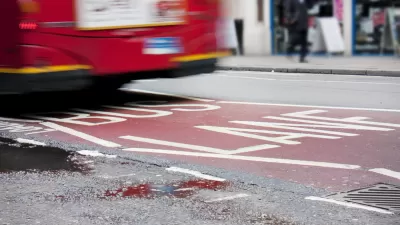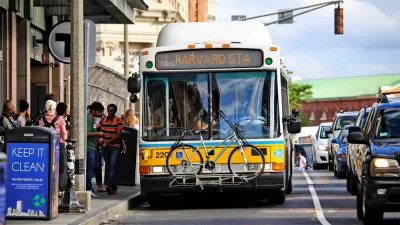Stephen Lee Davis investigates a campaign by Baton Rouge community groups to revive its bus service as it teetered on the brink of collapse.
Roughly a year ago, Baton Rouge's Capital Area Transit System (CATS) was faced with a fiscal crisis that threatened to shut it down altogether. But thanks to a coalition "of churches, faith-based groups, social workers, and university students and groups" dubbed Together Baton Rouge, citizens passed a ballot measure to raise taxes not only to keep the system alive, but to double its funding and give it a major facelift.
At the peak of CATS' financial woes, the mayor appointed a blue ribbon commission to see what could be done. Said commission chair Rev. Raymond Jetson: "Before there can be a robust transit system, before you can do novel things like light rail between Baton Rouge and New Orleans, and before you can have street cars from downtown to LSU, you have to have a backbone to the system. And that backbone is a quality bus system."
In part, the coalition built buy-in by promising specific improvements to the system that citizens could sink their teeth into. These promises were presented at every single public meeting:
- Decreased average wait times for buses from 75 minutes to 15 minutes.
- Eight new express and limited stop lines, serving the airport, universities, mall and other areas.
- GPS tracking on the entire fleet, with exact arrival times accessible on cellphones.
- New shelters, benches and signage at bus stops.
- Expanded service to high-demand areas and increased routes, from 19 to 37.
- Three new transfer centers operating in a grid system to replace the outdated route system that leads all buses back to Florida Boulevard.
- A foundation for Bus Rapid Transit, a system in which buses get their own right-of-way lanes.
Between Together BR, the blue ribbon commission, and the non-profit Center for Planning Excellence, community leaders were able to pursue extensive outreach, holding 120 outreach sessions in the four months leading up to the vote.
A reorganization of CATS' governance structure is waiting to pass through the state legislature, but the passage of the measure represents a major victory for transit and political mobilization in the area.
FULL STORY: Saving a transit system and turning the tide for the future of a mid-sized city

Alabama: Trump Terminates Settlements for Black Communities Harmed By Raw Sewage
Trump deemed the landmark civil rights agreement “illegal DEI and environmental justice policy.”

Study: Maui’s Plan to Convert Vacation Rentals to Long-Term Housing Could Cause Nearly $1 Billion Economic Loss
The plan would reduce visitor accommodation by 25% resulting in 1,900 jobs lost.

Planetizen Federal Action Tracker
A weekly monitor of how Trump’s orders and actions are impacting planners and planning in America.

Restoring Northern India’s Himalayan ‘Water Temples’
Thousands of centuries-old buildings protect the region’s natural springs and serve as community wells and gathering places.

Milwaukee to Double Bike Share Stations
Bublr Bikes, one of the nation’s most successful, will add 500 new e-bikes to its system.

DC Extends Application Window for Outdoor Dining Permits
District restaurants will have until the end of November to apply, but businesses with permits in rush hour parking lanes must end operations on July 31.
Urban Design for Planners 1: Software Tools
This six-course series explores essential urban design concepts using open source software and equips planners with the tools they need to participate fully in the urban design process.
Planning for Universal Design
Learn the tools for implementing Universal Design in planning regulations.
Caltrans
Smith Gee Studio
Institute for Housing and Urban Development Studies (IHS)
City of Grandview
Harvard GSD Executive Education
Toledo-Lucas County Plan Commissions
Salt Lake City
NYU Wagner Graduate School of Public Service





























